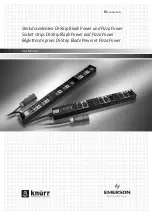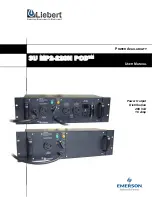
The following applications are possible by using thermal overload protection
function with one time constant LPTTR:
•
Thermal overload protection of overhead lines where the outside air
temperature is given as the ambient temperature to the function. Alternatively,
an average outside air temperature can be given as a setting value. Note that
for such application, the primary conductor heating time constant shall be
used. The reference temperature
TRef
shall be set as primary conductor
temperature raise above the ambient temperature for the set reference current.
The trip temperature
TripTemp
shall be set as maximum permissible primary
conductor temperature in degrees Centigrade.
•
Thermal overload protection of power cables. Note that for such application,
the ambient temperature shall actually represent the soil temperature. Note that
for such application, the overall cable heating time constant shall be used. The
reference temperature
TRef
shall be set as primary conductor temperature raise
above the soil temperature for the set reference current. The trip temperature
TripTemp
shall be set as maximum permissible cable temperature in degrees
Centigrade.
•
Thermal overload protection of power transformer where the outside air
temperature is given as the ambient temperature to the function. Alternatively,
an average outside air temperature can be given as a setting value. Note that
for such application, the power transformer oil heating time constant, which is
typically available from transformer heat run test (i.e. transformer temperature
rise test) shall be used. The reference temperature
TRef
shall be set as top oil
temperature raise above the ambient for the set reference current of 100% (i.e.
60°C in accordance with IEC 60076-2). The trip temperature
TripTemp
shall
be set as maximum permissible top oil temperature in degrees Centigrade. For
power transformer manufactured by ABB, a trip value of 105°C is
recommended. The same value is also recommended in IEC 60076-7
published in 2005.
•
Thermal overload protection of power transformers where the top oil
temperature is measured using a sensor and provided to the function as
ambient temperature. Note that for such application, the power transformer
winding to oil heating time constant (i.e. typically much shorter than the power
transformer oil heating time constant) shall be used. Some typical values of
this time constant is around five minutes. The reference temperature
TRef
shall
be set as hot-spot winding temperature rise above the top oil temperature for
the set reference current of 100% (e.g. 18°C in accordance with IEC 60076-2
published in 2011). If required, additional safety factor (e.g. 1.3) can be used
to increase the
TRef
value. The trip temperature
TripTemp
shall be set as
maximum permissible winding hot-spot temperature in degrees Centigrade.
The conservative trip value, in accordance with IEC 60076-7 published in
2005, is 98°C or 110°C depending on type of paper insulation used. Note that
higher value can be used if higher relative ageing rates for the power
transformer are allowed. For power transformer manufactured by ABB, the
trip value for hot-spot temperature of 130°C is recommended.
•
Any of the above four application where additional configuration logic is used
based on LCPPTR function output TEMP (i.e. estimated protected object
1MRK 506 375-UEN A
Section 8
Current protection
Railway application RER670 2.2 IEC
185
Application manual
Summary of Contents for RELION RER670
Page 1: ...RELION 670 SERIES Railway application RER670 Version 2 2 IEC Application manual ...
Page 2: ......
Page 22: ...16 ...
Page 48: ...42 ...
Page 70: ...64 ...
Page 80: ...74 ...
Page 100: ...94 ...
Page 210: ...204 ...
Page 364: ...358 ...
Page 384: ...378 ...
Page 468: ...462 ...
Page 494: ...488 ...
Page 504: ...498 ...
Page 505: ...499 ...
















































